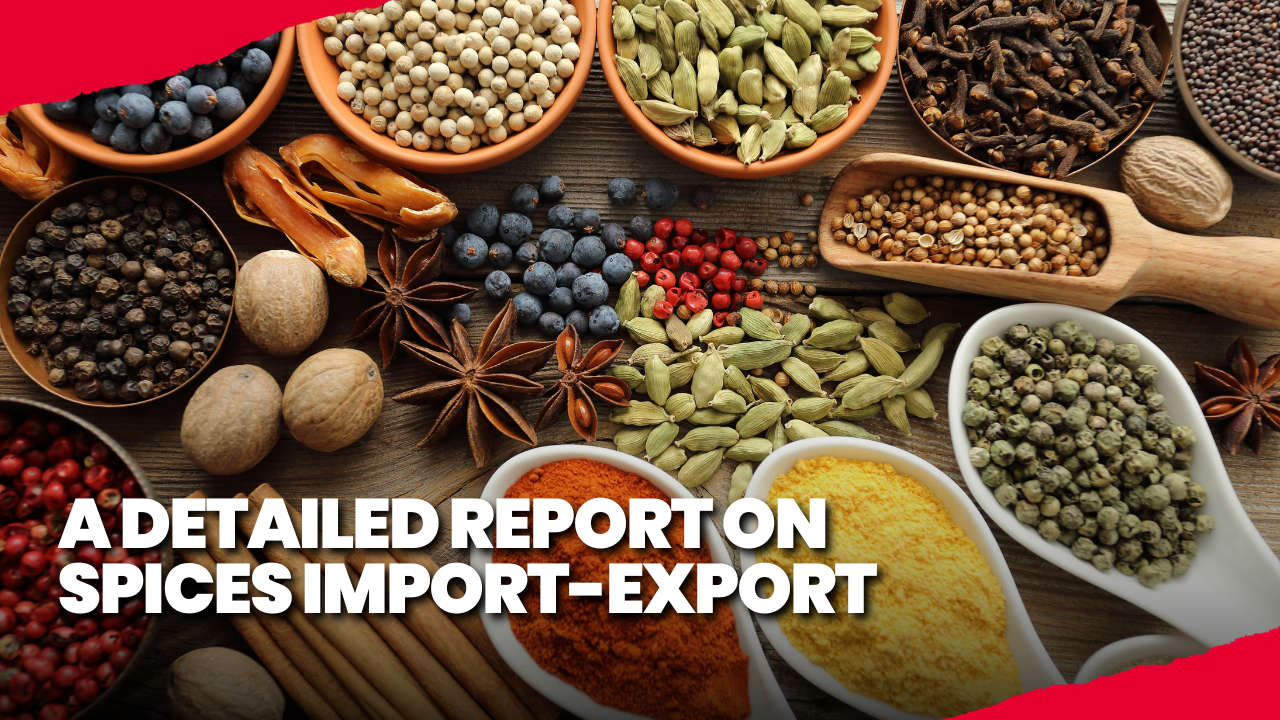
India is the world’s largest spice producer. It is also the largest consumer and exporter of spices. The production of different spices has been growing rapidly over the last few years. Production in 2022-23 stood at 11.14 million tons compared to 11.12 million tons in 2021-22. During 2022-23, the export of spices from India stood at US$ 3.73 billion from US$ 3.46 billion in 2021-22.
India produces about 75 of the 109 varieties which are listed by the International Organization for Standardization (ISO). The most produced and exported spices are pepper, cardamom, chili, ginger, turmeric, coriander, cumin, celery, fennel, fenugreek, garlic, nutmeg & mace, curry powder, spice oils and oleoresins. Out of these spices, chili, cumin, turmeric, ginger and coriander makeup about 76% of the total production.
The largest spices-producing states in India are Madhya Pradesh, Rajasthan, Gujarat, Andhra Pradesh, Telangana, Karnataka, Maharashtra, Assam, Orissa, Uttar Pradesh, West Bengal, Tamil Nadu and Kerala.

Spices are exported under following HS codes
- HS:33019033
- HS:09109100
Government Initiatives
1. Export Development and Promotion of Spices
This initiative by the Spices Board of India aims to support the exporter to adopt high-tech processing technologies and upgrade the existing level of technology for the development of industry and to meet the changing food safety standards of the importing countries. The initiative provides benefits of infrastructure development, promoting Indian spice brands abroad, setting up infrastructure in the major spice growing centers, promoting organic spices and special programmers for north-eastern entrepreneurs.
2. Setting up and maintenance of infrastructure for common processing (Spices Parks)
Spices Board has launched eight crop-specific Spices Parks in key production/market center’s intending to facilitate the farmers to get an improved price realization and wider reach for their produce. The purpose of the park is to have an integrated operation for cultivation, post-harvesting, processing, value-addition, packaging and storage of spices and spice products. The common processing facilities for cleaning, grading, packing, and steam sterilization will help the farmers to enhance the quality of the produce, resulting in better price realization.
3. Spice Complex Sikkim
Spices Board submitted a project proposal to the state’s cell for setting up a Spice Complex in Sikkim seeking financial assistance for facilitating and demonstrating common processing and value addition in spices to help farmers and other stakeholders in the state.
Also Read This A Detailed Report On Textiles & Apparel Products Import-Export
Countries Importing spices from India
- UNITED STATES
- SYRIA
- BANGLADESH
- JAPAN
- UNITED ARAB EMIRATES
- CANADA
- SOUTH KOREA
- UNITED KINGDOM
- GERMANY
- CHILE
Top buyers importing from India are
- GOURMET FOODS FZC
- HASAN IMPEX LTD
- IFC SEFOOD INC
- JI WON CO LTD
- M S. SAJIB ENTERPRISE
- SOHA ENTERPRISE
- MARK IND SPICES LTD
- JALUX INC
- HABIB BHANDER
Governing Body
Spices Board of India
The Spices Board of India is set up for the development and global promotion of Indian spices. It acts as a link between Indian exporters and importers abroad. The main activities of the board involve promotion, maintenance and monitoring of quality, development of better production methods, guidance, financial and material support to growers, infrastructure facilitation and research. This board has been spearheading activities for the excellence of Indian spices, involving every segment of the industry.
Documents required for spices export
Indian exporters who wish to start a spice export business from India need to have the following documents:
- Company PAN card
- Importer exporter code
- Incorporation certificate
- MSME registration certificate
- RCMC from Spices Board
- Trademark registration
- FSSAI registration/license
- Passport-size photograph of the exporter
- Phytosanitary certificate
- Bank statement
- Authorized dealer code from a recognized bank
- GST documentation7
Visit the Exports Compliance Dashboard to meet your documentation requirements.






